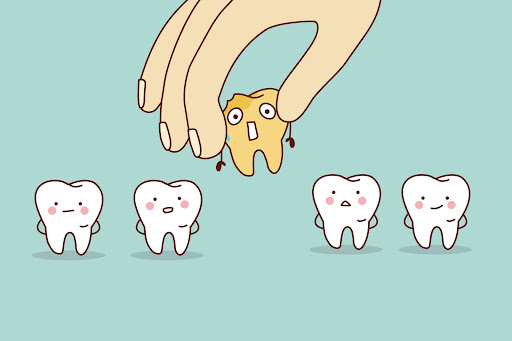
How to Overcome Dental Anxiety
August 6, 2021
Pinhole Surgical Technique vs. Gum Grafting: Which treatment is better?
August 20, 2021When patients are unhappy with the appearance of their teeth, they often look towards porcelain veneers as an opportunity to improve their smiles.
Porcelain veneers are thin ceramic shells that are bonded to the front of the teeth. Although porcelain is inherently brittle, they form a robust and irreversible bond when fused to enamel.
How are veneers applied to the teeth?
Dentists can apply porcelain veneers to a single tooth or several teeth simultaneously. In most cases, they divide this procedure into two separate appointments over a few weeks. Here, we explain a typical timeline of veneer application:
1. Preparation: Dentists apply a numbing agent and lightly trim the front side of the enamel to make room for veneers. Most veneers require preparation so that they don’t look bulky or protrude from the mouth.
It’s important to note that not all types of porcelain veneers require preparation. Ultra-thin Lumineers® require zero tooth reduction and anesthetic.
2. Meet Your Match: Porcelain is color-matched to the teeth, so veneers blend seamlessly into the smile. For an all-around brighter smile makeover, dentists can apply in-office whitening treatments before applying veneers.
3. First Impressions: After the dentist preps the teeth, they take impressions of the teeth and surrounding gums. Dentists use this replica of the mouth to fabricate final veneers.
4. Temporaries: If needed, temporary veneers are placed over the teeth while the lab creates the final veneers. Dentists apply temporary veneers after removing a relatively more significant tooth structure due to decay or other concerns. Exposed teeth could look bizarre or experience sensitivity without temporary veneers.
5. Second Visit: Dentists remove the temporaries and examine the mouth before setting the permanent veneers when the final restorations come back from the lab. The dentist evaluates the veneers’ fit, shape, and color and may make adjustments for an ideal outlook.
6. Permanent Bonding: The dentist bonds the veneer to the enamel with a unique adhesive and cures the restoration with light energy.
7. Follow-Up: Most dentists want new veneer patients to return in about a week. The purpose of this follow-up appointment is to monitor and evaluate how the gums and teeth respond to the veneer.
Advantages
Aside from having a smile that lights up the room, here are some advantages of porcelain veneers:
· They can address most cosmetic concerns.
· Porcelain is natural-looking.
· Typically, dentists trim .5 to 7 millimeters during veneer preparation, which is about twice the thickness of an eggshell. Veneers are comparatively conservative than other dental procedures (like crowns).
· They’re a long-lasting solution. With proper care, veneers can survive up to 20 years.
Disadvantages
While there are countless benefits of porcelain veneers, they also come with a few drawbacks. Some crucial disadvantages accompanying veneers are:
· They’re permanent. Porcelain veneers are durable but are still vulnerable to dental trauma. If veneers are damaged, they must be immediately replaced.
· Whitening agents are specially formulated to lighten tooth enamel. Porcelain is stain-resistant but cannot be color corrected. Even if the adjacent teeth experience whitening, veneers will remain the same color.
· After removing some enamel, patients may experience hot and cold sensitivity. Temperature sensitivity usually goes away on its own, but a dentist may help expedite this process.
Have Something to Smile About
Porcelain veneers can dramatically transform your smile, but they are a personal choice. Patients should weigh the pros and cons before receiving cosmetic dental treatments.
Dr. Abbey J. Lee educates patients on the differences between four different types of porcelain veneers. Call (404) 328-7177 at your earliest convenience to schedule a consultation with Dr. Lee.


